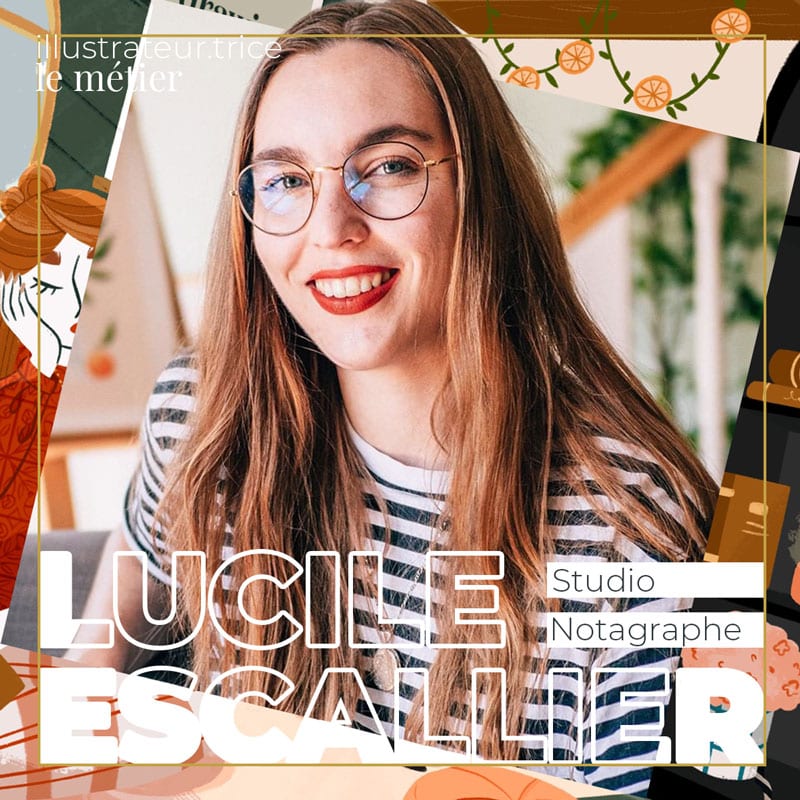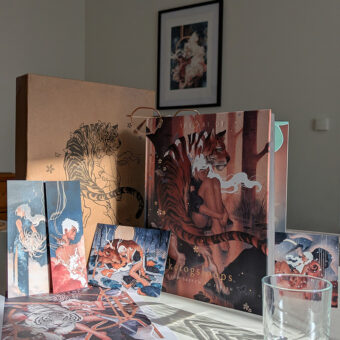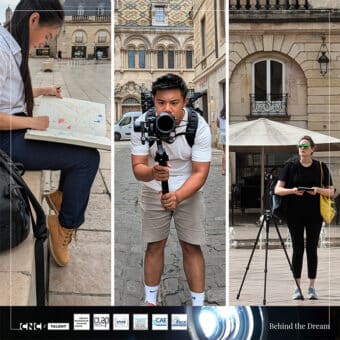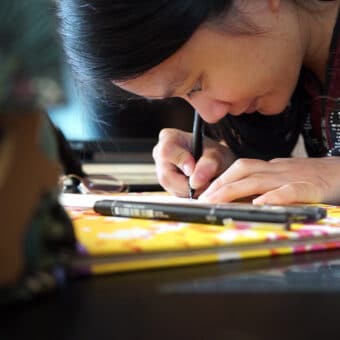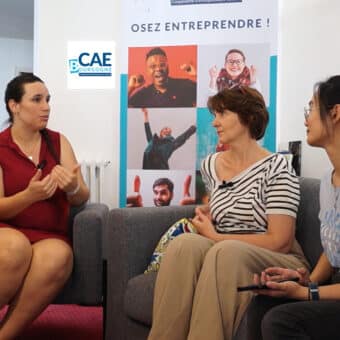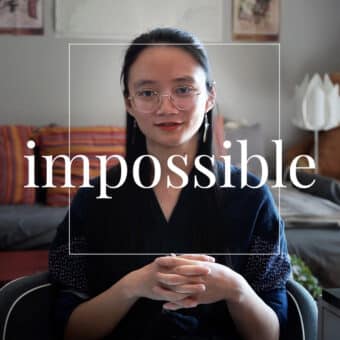Edited by my beloved friend K.L
This article is part of the special series “Illustrator: the profession“, where you will find the answers to the questions you most frequently ask me about my occupation.
For this special occasion, I invited some talented colleagues to give us their realistic, detailed, and sincere points of view on the trade of illustrator.
Lucile Escallier: graphic designer, illustrator, content creator
Since I absolutely wanted to interview an illustrator who is also a graphic designer for this special series, Lucile is the ideal guest. Not only because I love her neat, feminine and dreamy universe, but also because Lucile has a very remarkable sense of community and sharing.
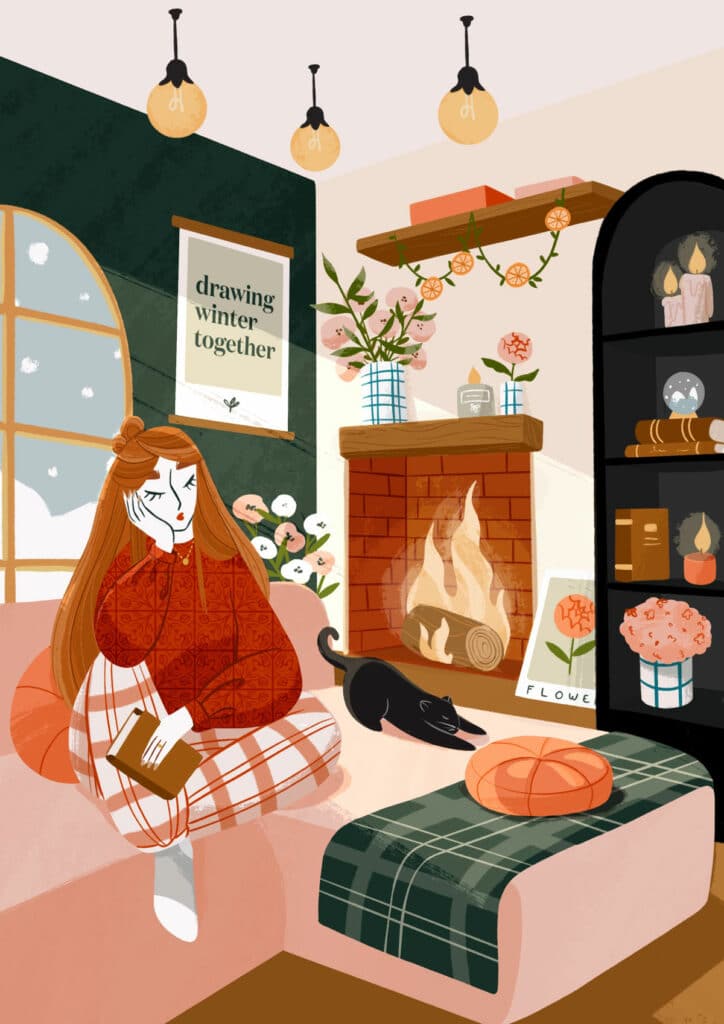
Lucile Escallier is the founder of Studio Notagraphe since 2020. She is a French graphic designer and illustrator. I discovered Lucile’s universe through an Instagram story about 2 years ago. As you will probably take notice throughout our conversation, Instagram plays an important role in her trade.
Each sharing of Lucile on Instagram, whether it is a drawing, a photo, or a story, reflects her sense of details and consistency across her universe.
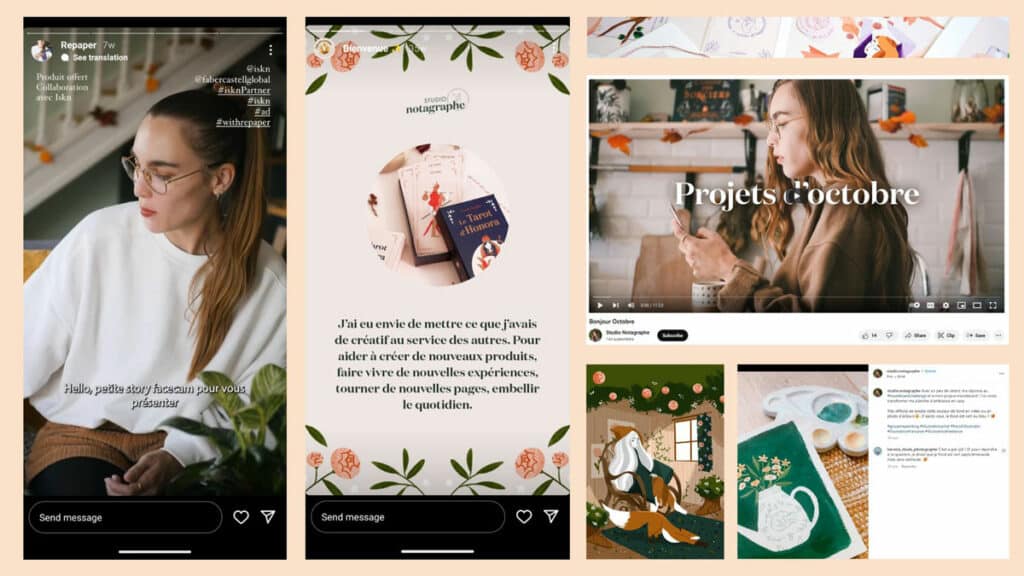
What fascinates me about Lucile is her ability to imagine, to modulate, to put effort into a job that she tailors to her specifications; a way of looking for clients adapted to her personality and a professional environment that suits her.
The interview with Lucile quickly turned into a conversation between two colleagues on subjects that interest both of us.
The experiences that Lucile shared herein are valuable guide for those who wish to build a fulfilling creative career based on authenticity.
Meet the artist

Table of contents
Here is the table of contents, to facilitate your reading, rereading, and future research:
The illustrator + the graphic designer + …?
Tu Ha An (An): How would you describe your activity?
Lucile Escallier (Lucile): I am both a graphic designer and an illustrator.
A big part of my job has creation involved. But it’s very different from the artist who does pure creation, in the sens of creating pieces of art solely to externalize his or her imagination.
I consider my job rather as putting my skills into service of others. There is a part that involves project management, another that involves working method, or another that is more about the technique of art itself.
And on the side, I also do my own accounting, my prospection, my communication… It feels like being a graphic designer, an illustrator, an accountant, a communicator, a marketer… all at the same time.
I would define my activity being more entrepreneurial than artistic.
An: You are also a content creator, don’t you? You’re very active on Instagram, you have a YouTube channel and also a newsletter. How do you manage to juggle between all these roles?
Lucile: It’s a bit complicated right now because we’re in a busy period.
The only thing that is fixed for me is Monday, which is dedicated to Instagram content. It’s nice to start the week without having a big client project, or without all the emails to deal with!
And then I keep four days in the week to work on client projects. I also use that time to shoot some vlogs.
I spend about two days a month on paperwork, looking at what’s going on in my business and figuring out in which direction I want to go, and what kind of clients I want to have, etc.
An: It seems like you are very well organized.
Lucile: I try! I associate days with tasks or people I want to offer my time to. After that, the schedule can be adjusted as needed.
Create a tailored job for yourself
The trigger
An: What made you choose this creative trade, and combine illustration with graphic design?
Lucile: I’ve always been drawing, I’ve always been pretty creative.
I knew that I wanted to work in the visual industry when I was 15 or 16 years old. At that time, I saw a documentary about the singer Mika and how he worked on the covers of his albums with his sister, who is also a graphic designer.
In that documentary, there was a scene where everyone was sitting around a table. There were papers everywhere, and people were choosing between different characters and elements to put here and there, wondering how to arrange all that. I thought to myself: “Honestly, it looks cool to be paid to do this all day!”
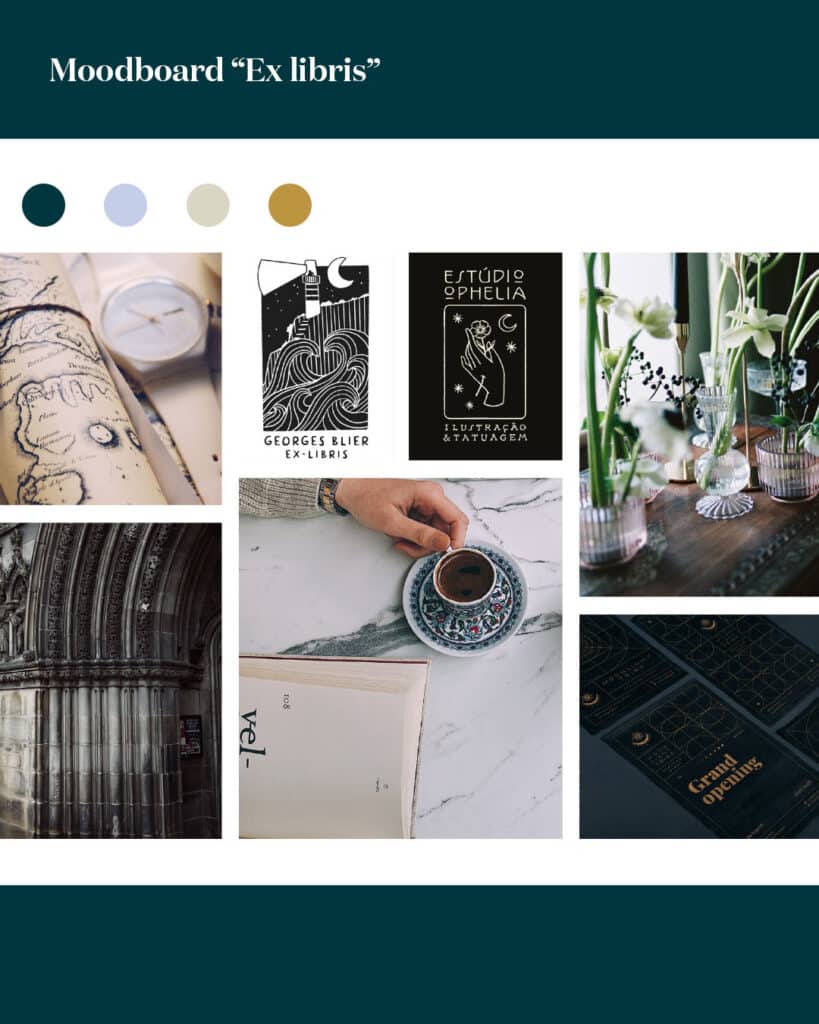
I completed a degree to become an advanced technician in visual communication, specializing in graphic design, publishing and advertising. After that, I followed up my study with art direction, then digital communication.
I worked in different companies, as an intern or as an employee. And I don’t know why, or how, but I knew that I would eventually open my own business and become independent.
When graphic design meets illustration
An: When does illustration comes into your big picture?
Lucile: Actually, I wanted to become an illustrator. But at the time, illustration schools required 5 years of study for only very few places and equally just very few opportunities on the job market after that.
Illustration came back into my life by itself. For a long time, it was often in the background of what I was doing at the time.
I was lucky enough to have illustration classes in my art direction degree. That class taught me how to make illustrations, how to respond to commissions in different themes…
When I was in the customer care department of a start-up, I was working on courses and learning materials for the solution that my company at that time was selling. We did a lot of illustrations to explain the concepts, to go from the abstract to something very concrete. This specific experience allowed me to reconnect with illustration.
Since then, I have always tried to apply illustration to my graphic design practice. I do a lot of illustrated logos and often include illustration in my proposal…
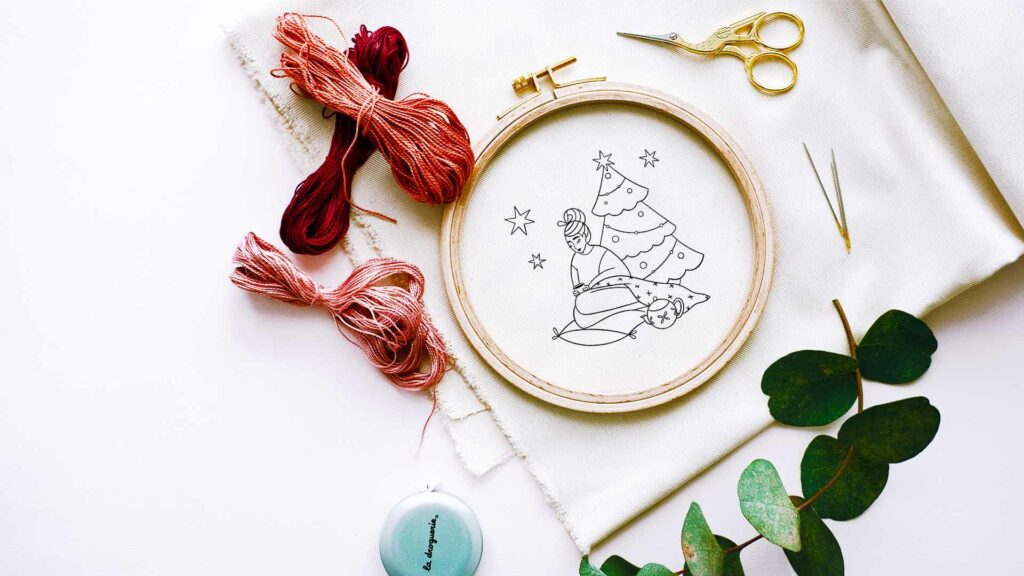
Right now, I have as many illustration projects as branding projects. And I think it’s a good and confortable balance.
An: Which part of your activities brings you the most income, and which part brings you the most happiness? Could one activity fulfills both?
Lucile: Right now, my main source of income comes from branding projects.
I love to accompany and build a memorable visual universe for my clients as a brand creator. I often integrate illustrations and illustration techniques into my proposal and the process.
I think that branding projects are my main source of happiness as well.
Studying in graphic design
An: Do you think that having studied graphic design, and received some training in illustration, gives you an advantage in the trade?
Lucile: From experiences, compared to people I’ve met in the illustration field, and also based on the training I had, I think so.
The big advantage of having attended graphic design school, digital school, and keeping illustration in the background, is that I got real-world training on how to work with clients, how to answer to their request and how to handle their feedback.
I learned to accurately identify what the clients needs, why they need it, what sort of campaigns they will be most likely to follow through, what kind of public they are trying to reach… All these skills allow the students graduated from advanced technician in visual communication to be operational quickly.
The authentic way to attract customers through social networks
When the only method that works is… social networks
An: Do you reach to your potential clients, or do the clients come to you?
Lucile: I tried several prospecting techniques: talking about it with my entourage, developing the physical network, sending emails with examples of what we could do together to brands I liked. And… spoiler alert, nobody ever answered me.
What works in my case is social networks. I know that not everyone would agree with me on that.
But social media brought all my clients to me. Then my clients told other people about it, which leads to a situation that all of my clients came from feedbacks spread by word-of-mouth.
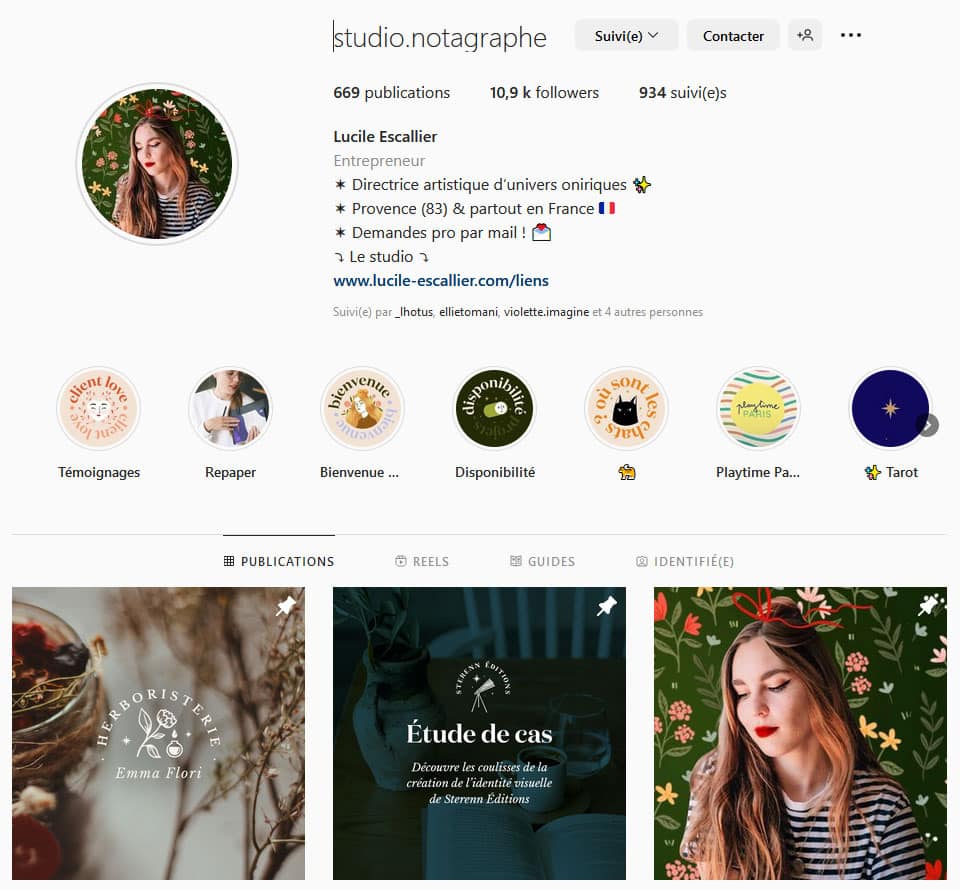
Three steps before the client knocks at our door
An: I understand why people freak out when they hear this. They think it’s the “lazy” and “elitist” way.
So often, people don’t see all the works we put into our social networks. Not only in the quality of our photos, but also in the content we share, and the bond we create with the community, which is something that has to be maintained month after month, year after year.
People just see a pretty field. They don’t know how many seeds we’ve sown and how many years have passed before the flowers grow.
Lucile: Yes, and I find that there are two types of people when it comes to networking: those who give up soon after starting, and those who wait for the clients to come.
For me, there are three steps: the first step is visibility, the second is to get into people’s minds, and the third is that by seeing you again and again, people will want to initiate a conversation.
If you don’t have the first step which is visibility, on social networks at least, nobody will notice you. And to be visible, you have no choice but to beat the social networks algorithm on its game.
Traditional prospecting strategy or “social networks” method?
Lucile: After that, it doesn’t mean that doing physical prospecting, i.e. going to city halls or the tourist office, doesn’t work. It really depends on your personality.
I know that I am very anxious to talk face to face with other people. If I go to the tourist office to present a project, I might not be able to even get enough attention from the audience to begin with. Plus, they would form an opinion about me pretty quickly. I’ll get too much stress, I’ll get confused with my speech, and I’ll leave without having said everything I wanted to say, or without even knowing whether I spoke to the right person.
I have a better chance of prospecting people in my local area by posting a personal project about my city and tagging the right social accounts in the city.
On the other hand, those who choose the solution of being on the networks thinking that it will work right away are wrong. It requires efforts, patience and focus.
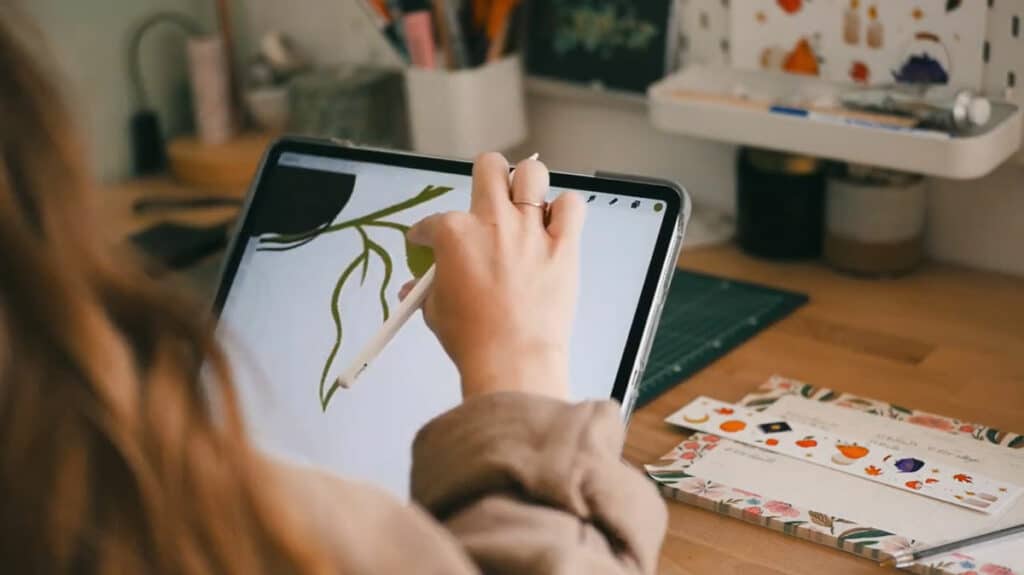
Most entrepreneurs are not Elon Musk, or Jeff Bezos
An: What is your greatest pride in the job?
Lucile: I think it’s being successful on my own.
I had a hard time pondering, hesitating, and quitting a very stable job, which was considered as Holy Grail by the society. My greatest pride was giving myself that chance, despite my fear.
An: From the moment you started as an independent until you can consider that you are able to make a living out of it, how long did it take?
Lucile: I would say a year? It went very well for the first 6 months.
Everything comes in waves, with highs and lows. There is a craze where something would happen, and then you hit a low point. It is usually at this point that people give up. But it actually works better if you start to pick up the moment you hit the ground, that’s when you can only go up.
I think I took a whole year to stabilize, and again, it’s a stability at a small scale. I mean, I’m not Elon Musk. And I don’t aspire to be.
An: It’s true that when we talk about entrepreneurship, I feel like Elon Musk and Jeff Bezos are often the only names that come up. While most entrepreneurs are not famous, nor billionaires, nor that problematic…
Lucile: Yes, there’s a world apart being Jeff Bezos and being a struggling small businessman/woman, being a self-employed entrepreneur AND an illustrator is a tough life.
And we forget one thing that is, in my opinion, very important: We can work and earn solely to serve the society.
We can choose to invest in beautiful projects, or to work on projects according to our convictions, and what we want to bring to the world.
To be free to choose your battles, that’s also the joy and the strength of being independent.
Inclusivity: the battle that requires great delicacy
Inclusivity is not just a trend
An: I came to notice a tendency among brands and media. There is a growing emphasis on diversity, whether it’s cultural, physical, or in the representation of people with disabilities.
I know you are quite sensitive to these topics. Is diversity a subject that you want to apply in your creations? Do you think there is too much blackwashing, or too much double-standard in communication in general?
Lucile: I’ve seen a lot of different things regarding this issue.
I was once asked specifically on a project to remove certain ethnicities from a certain type of visual that we were working on. Even though the project was aiming at a location where a very large part of the population was from that certain culture and from that certain country.
It was the first time I realized that it sucks.
I am part of the majority. I’m white, blonde with blue eyes, I never have any problem identifying with anything on advertising campaigns. I didn’t experience racism nor did I imagine that there could be any of such in my work.
I became more aware of it after that experience, wondering how far it could go.
I know about disability, and it’s a subject that I never had a problem positioning myself on. I’ve always suggested disability-related elements to my clients, who may not be aware of the techniques of inclusivity through color, contrast or font size. Such techniques can make a project accessible to, say, visually impaired people.
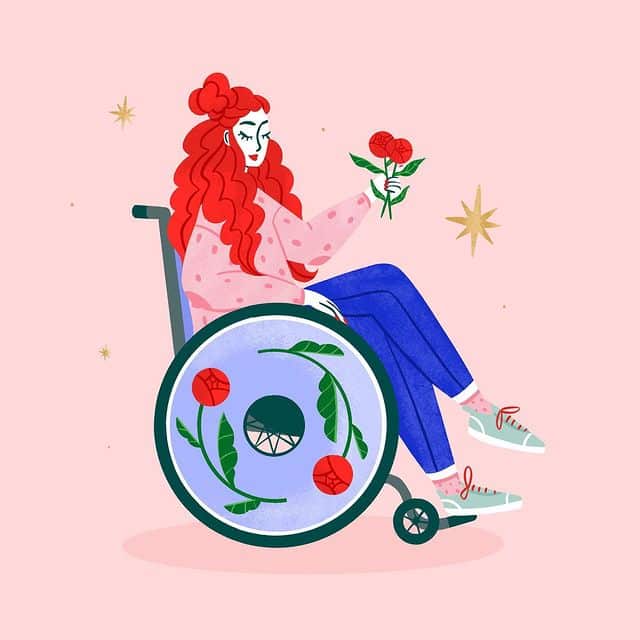
Afterwards, the different physical representations are not necessarily always requested by my clients. Nevertheless, I always draw people with different skin colors and with different sizes.
And I am always pleasantly surprised with my clients. Some of them have told me that they had not thought of it, and that my proposal was a good idea.
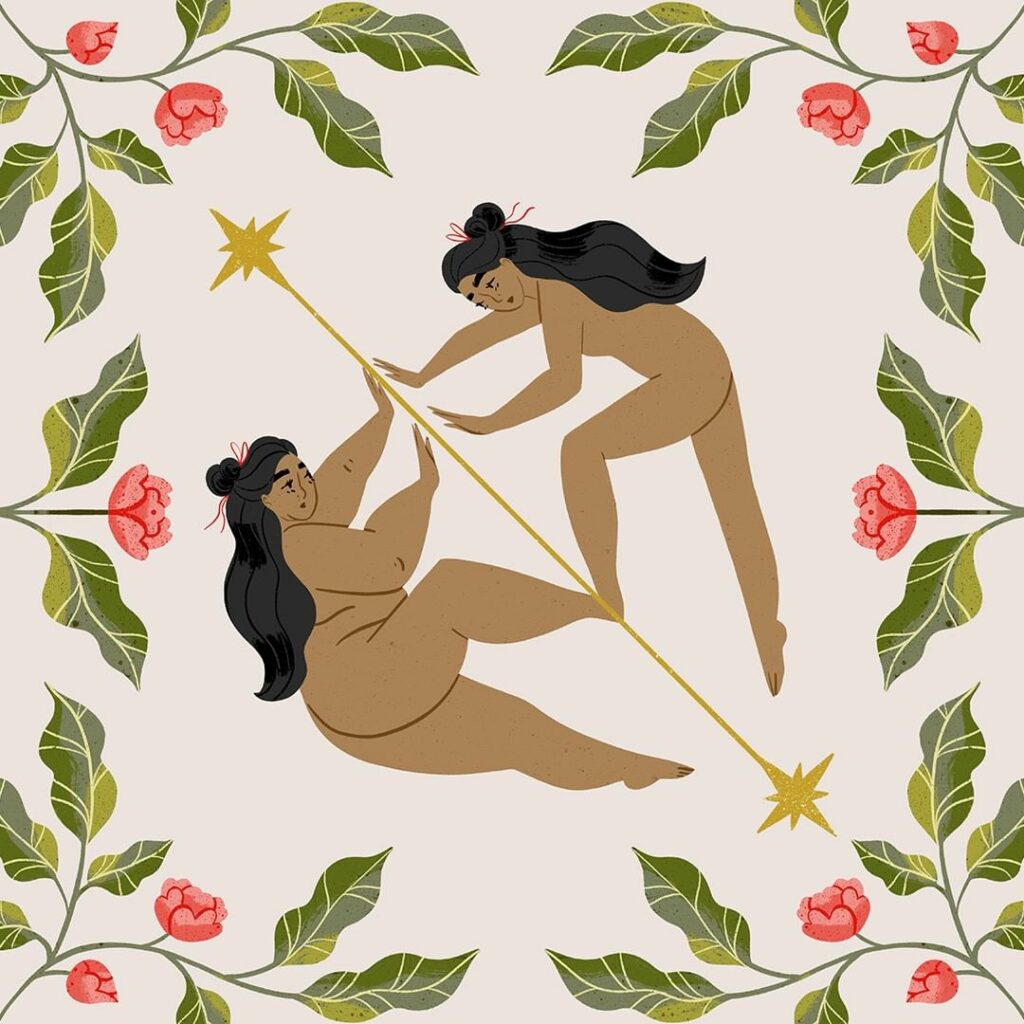
The question of diversity came in my former job as well. Our characters do not come from different ethnicities, so we wondered how to represent diversity: By the colors? By the shapes? …
This is a pretty big question in design, Lauren Mathews wrote the article How to Create an Inclusive Retail Store Experience which covers this topic perfectly.
The tricky positioning
Lucile: Then, there are subjects that I am not very comfortable either.
For example, I don’t see myself doing an illustration when there are movements to support black women illustrators, because I feel that I should give a voice to the people concerned, who are usually invisible.
I find that there is a bit of ambivalence between wanting to help, and not wanting to take the place of those who need to be heard and listened to. We can be allies, but we are not obliged to speak out.
An: Your point of view is very complete and enriching. However, on the last point, I think that it is sad that those who identify themselves as the majority no longer dare to speak out.
I agree with you on the fact that we must let those who are really concerned express themselves. But there will be no change if they are the only ones to speak. The allies are there, but they are no longer heard. And on the opposite side, only the loudmouths speak up.
Some illustrators are even reluctant to use cultural elements for fear that it will be interpreted as cultural appropriation. I have the impression that we use this term a little too easily.
Lucile: Yes, this is a hard question.
I remember seeing an American illustrator who made a poster about yoga postures and put the Americanized names of the postures (note: for example “downward-facing dog” instead of Adho Mukha Svanasana). She got a lot of comments about appropriating yoga.
If something as innocent as yoga can create so much dissonance on both sides, I don’t know if I would challenge myself to create a yoga poster. It’s hard to position yourself because you don’t know how that positioning will be received.
Sometimes, instead of actively participating in a challenge or a cultural movement, I prefer to share again things that people have done before, rather than adding a stone to a building that might be misunderstood or misinterpreted.
Is being a woman an advantage or a constraint in the profession?
An: I asked a lot whether being a woman is an advantage or a disadvantage in our profession?
Before starting this job, I worked at a place where it is difficult to be a foreigner, to be a woman, and to be young! As a result, today, I can only see happiness with my new job! But my point of view is biased.
And you, what do you think about it?
Lucile: I think it depends on the environment you’re in.
I found it harder to be a woman in a communications agency, and less difficult in freelancing.
I speak from experience. I find that there is a rather old-fashioned and misogynistic side in the communication agencies where I worked (in contradiction with the scale-up in which I evolved afterwards). I felt like I was seen as the cute little girl who came begging for work, especially when I traveled to meet potential clients. But I had no problems behind a computer screen.
However, when you’re self-employed, you get to choose what client you want to work with, and who you are as a member of your community.
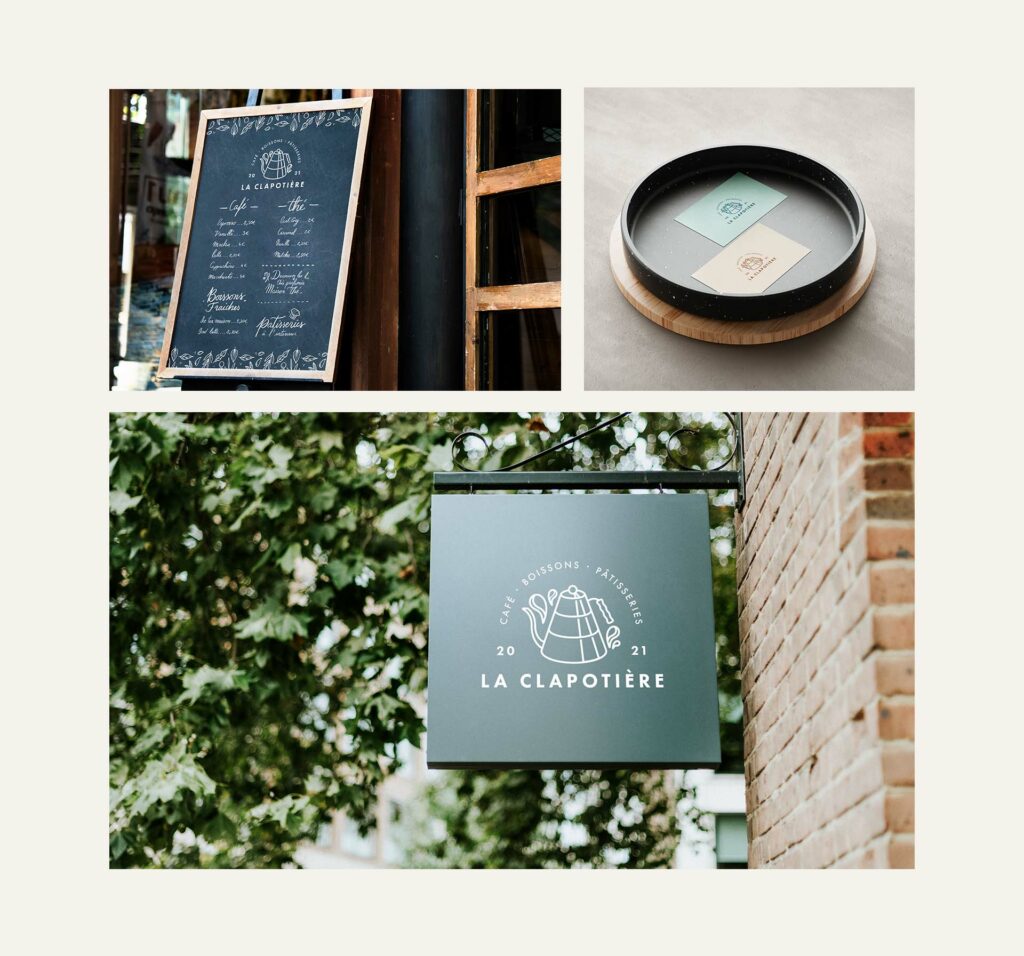
I know I’ve only been working with women since 2020. It’s not really my intention to do so. It’s just that I think I have something in me that have brought more women to me. Since my clients, my potential clients and my entourage are female for the majority, there is no problem with me being a woman.
On the other hand, if I only did graphic design for car dealerships, maybe people would still see me as the cute little girl who draws flowers.
Creativity in the service of others
The precious bond with clients
An: What was the best feedback you ever received?
Lucile: There are plenty of them! The best one I got was from a client who sent me a card to thank me.
It’s crazy to have received a letter from someone thanking me for the work we did together. It was a service, she gave me as much of rewards as I gave her, but she wrote me a letter…
And I think it’s crazy to have so many people following my work and interacting with what I do and giving me feedback. I’m very grateful for all this emulation, all these exchanges.
An: Your images have the power to touch people’s emotions, maybe that’s why the bond between you and your clients, or your subscribers, is so strong.
Lucile: Yes. And that’s a real difference from other experiences I’ve had.
In my previous job, even if I worked in client retention, when I worked for my colleagues: they would give me a brief, we would work together on it, and then the client would get the content through a platform; I never got direct client feedback.
There was always that line between you working behind the scenes, and the client seeing the company as one entity.
It’s interesting to really have human collaboration. You have a lot more interaction and you’re involved in all phases of the project. It’s much more rewarding.
Our value lies in an authentic relationship
An: Do you think that ready-made templates, applications that automatically generate illustrations, or artificial intelligence, are threats to our business?
Lucile: No. I see them more as tools.
I’m really happy if, by making a template for a client, she can present her brand properly. I find it rewarding for her to have her own independence with what we’ve created before.
I consider that these are tools that can allow us to value even more the work that we do, for the clients that we have.
As illustrators or as graphic designers, we have particular styles, and I’m not sure that technology or artificial intelligence is capable of recreating everyone’s particular style. People come to us because we give off something they like. It’s the human side they’re looking for.
After that, they’re still great tools for people who want to have fun with them to enrich their world. But I don’t think it can replace the human side.
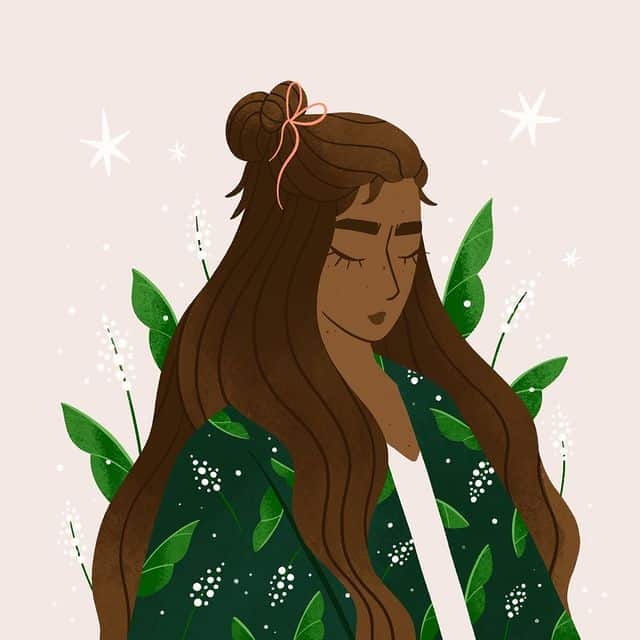
Administration: the cinder block of the creative
An: In the book Big Magic, Elizabeth Gilbert talked about the concept: sh*t sandwich.
When you look at any job from an external perspective, you only see the benefits. But every job has its sh*t sandwich. They are risks, constraints, difficulties that only those who do the job know.
To you, what could be the sh*t sandwich part of your job?
Lucile: The first thing that comes to my mind is the paperwork.
When you look at our job from an outsider’s point of view, we draw all day, we work on cool projects, and we make our own schedule…
But on the other hand, we have to calculate our social engagements, redo our accounting, make our own invoices, check them, deal with the taxes when something goes wrong, manage our own deductions, calculate all our charges, what we spend on softwares, …
And we have to do all this in our own time, without being paid!
I have a kind of administrative phobia. On top of that I am dyscalculic (note: specific numerical activity disorder). So it’s really hard to do my accounting without crying.
Yes, paperwork, is the ultimate sh*t sandwich.
Resources to get started
All experiences are to be valued
An: What do you think is the most important thing to start with? And did you have any resources that helped you at the beginning, that you could recommend to those who are starting out?
Lucile: I think that you should have tested the corporate world a little bit before starting.
I learned a lot by watching how other people worked: how project managers handled their projects, how my manager ran our week, what tools we used… I worked with freelancers in my past jobs as well, and I know what I liked about them and what I didn’t like. These are resources that I wouldn’t have had if I had gone straight from school.
In fact, I had my first experience between my bachelor’s and master’s degrees. For a year, I took on independent projects, and it didn’t go well. Because I didn’t have enough experience to properly manage a project, to effectively handle my time and understand the issues behind client projects.
But when you’ve been on the corporate side, you have a different view. Even when you’ve had a job that had nothing to do with creativity, you can acquire transversal skills that you can translate into your next professional life.
Pay attention to the financial aspect
Lucile: Another resource that I consider very important: don’t rush in without any backup.
From my experience, there will always be a low point in self-employment. If you don’t have the financial mean or backup from your friends or family resources to get the momentum going again, that’s when you may be forced to give up.
In my case, I was working part-time during the last months of my previous job. By then, I already set up my business a year before and already had some clients. That way, I wasn’t qualified for a conventional rupture, so I had to quit.
Since I already had my own business, I was not entitled to receive any compensation either. However, if I had waited to leave my job to receive unemployment benefits before starting my business, I would not have been able to test my business before quitting.
You have to be well informed about what you are entitled to and what you are not entitled to and make the most appropriate choice for your case.
Besides, I advise everyone to use an invoicing software! Doing your invoices by yourself is a waste of time.
The right attitude towards our loved ones
An: Do you have a message to those who wish to launch by themselves, and to the family members of these future illustrators who are still against the choice?
Lucile: For the family and friends, the message would be: the illustrators already have ONE job, they just need to find commissions to work on, which is very different.
For aspiring illustrators, my advice would be to show their loved ones that they are having fun at work. You have to be enthusiastic, because it makes you look more invested and confident in what you’re doing.
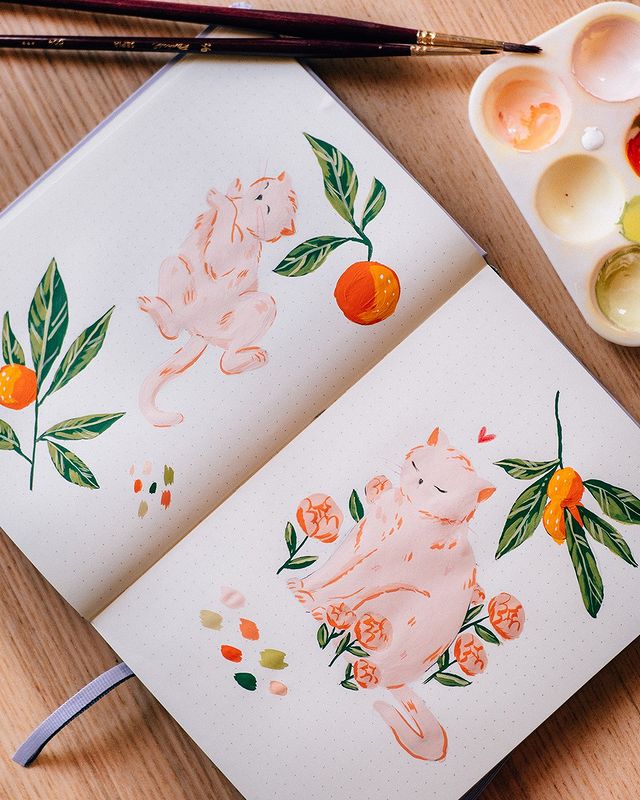
Don’t be afraid to ask!
An: Do you have any advice for those who dream of becoming an illustrator?
Lucile: You have to surround yourself with people, to find a community to support each other.
I met with groups of freelancers to learn more about the business. I enrolled in some coaching with a freelancer as well to learn how to do my invoices, to estimate the fees in my kind of business, etc.
Being in a group allows you to have different experiences and to understand what truly motivates, and put yourself in perspectives with others.
You shouldn’t be afraid of intruding. We often overestimate the ego of successful people and we don’t dare ask them questions about their job.
I’m surprised how many of people would ask me questions but then add: “If you don’t want to answer me” or “If it bothers you”…
We’re here to help each other, that’s what the network is all about. The more things we share, the more we grow together, and the more we grow as a community.
Lucile is preparing something very exciting…
An: Do you have any upcoming project, or a dream that you would like to make it a reality?
Lucile: I have many projects going one at the same time in the planning stages, and my beginning of the next year will be rather busy.
But speaking of dreams, I’d like to have my own atelier, or a small café that could be a atelier, to host other freelancers, like an artist residency. They could come and work and hold workshops to show what they do.
Where I live, it is not very dynamic in terms of freelancers, but we have a big tourist area. And I think it would be cool to be able to invite other freelancers, who could enjoy their vacation at the beach, work in a different setting and share what they’re working on with other people.
An: And is your idea for an online membership project still on??
Lucile: Yes, it’s still on! It’s a project that is very dear to me, but I have a big impostor syndrome and I’m very afraid to start. I’m still struggling to make it accessible and concrete. I promise I will release it this January. Oh, I’m making a promise to you, right? * laughs*
An: And now all the readers of my blog will know that you are committed to do it!
Lucile: Finally, what I want to do with my membership is to create a virtual space where we can meet, discuss, and work together… And this is a little part of my big dream.
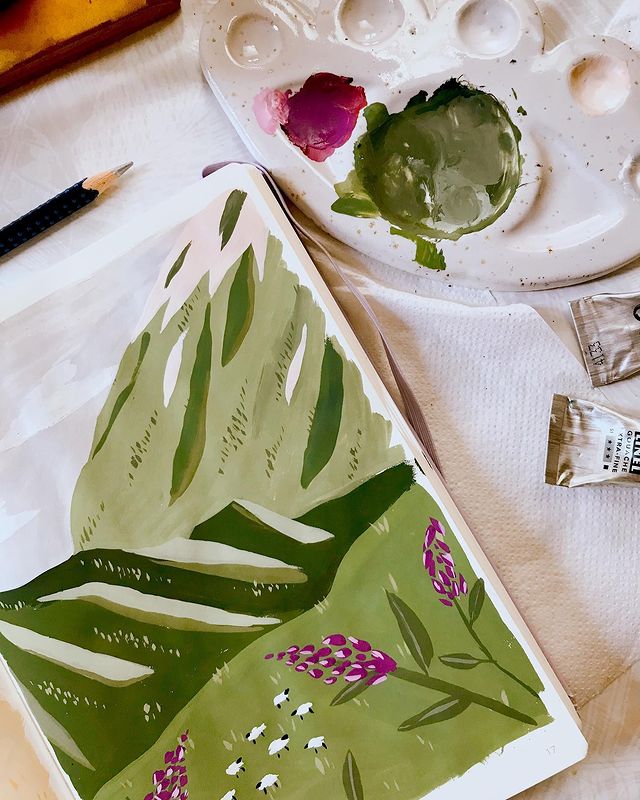
You can follow Lucile on Instagram studio.notagraphe, or on her website lucile-escallier.com
Giveaway
For this first special series in the blog, I would like to offer a package with 5 artworks, from each guest of this special series, to one lucky person among the readers.
If you want to participate in the giveaway, here is the link: https://forms.gle/Zr1zUMSQZsxfgPKk7
I’m also planning 1 surprise gift for each participant of the giveaway!
Dare to ask & Keep creating!
Tu Ha An
*Please consult the information on Copyright & Intellectual Property before copying or mentioning the content and images of tuhaan.com



